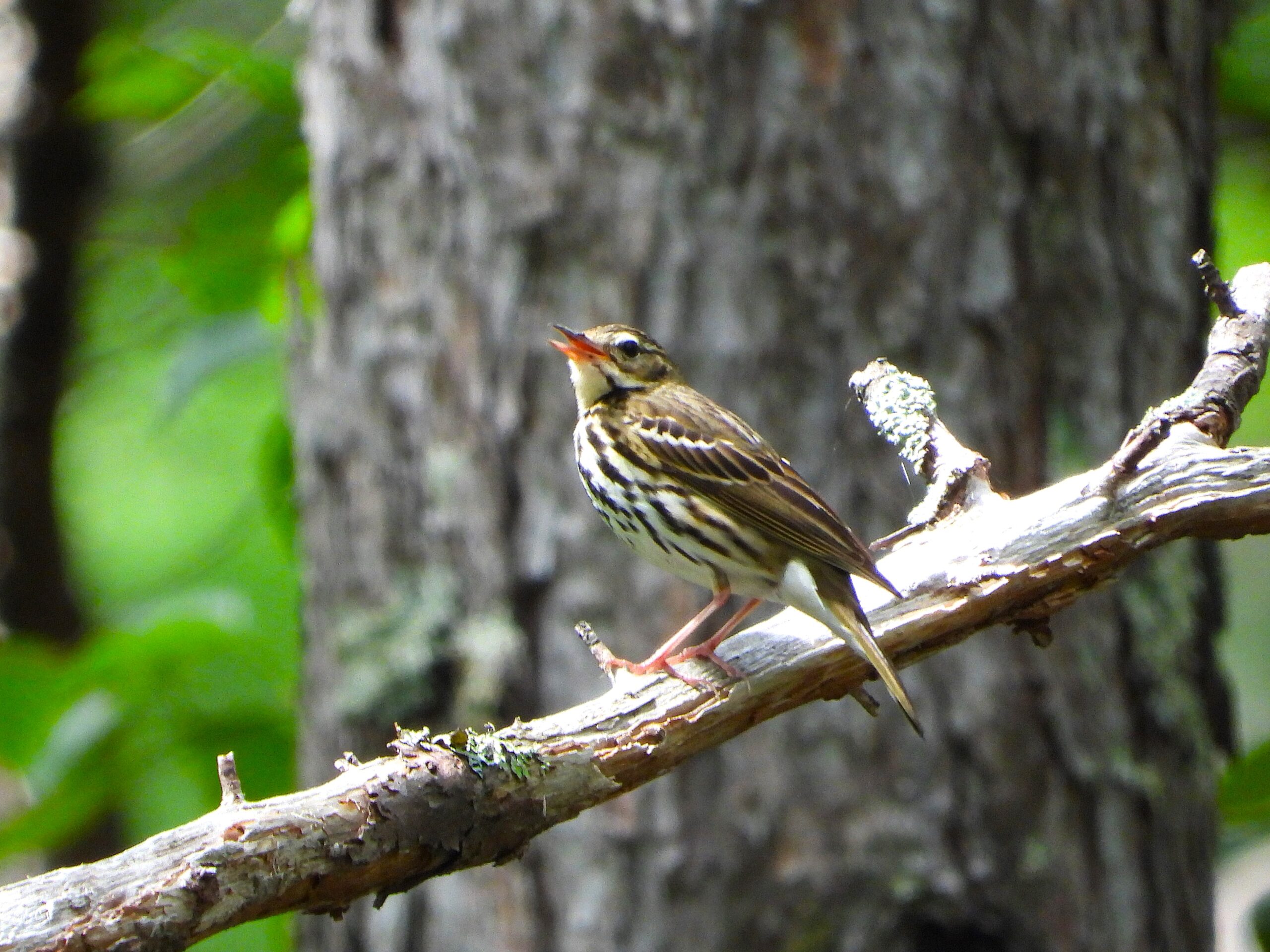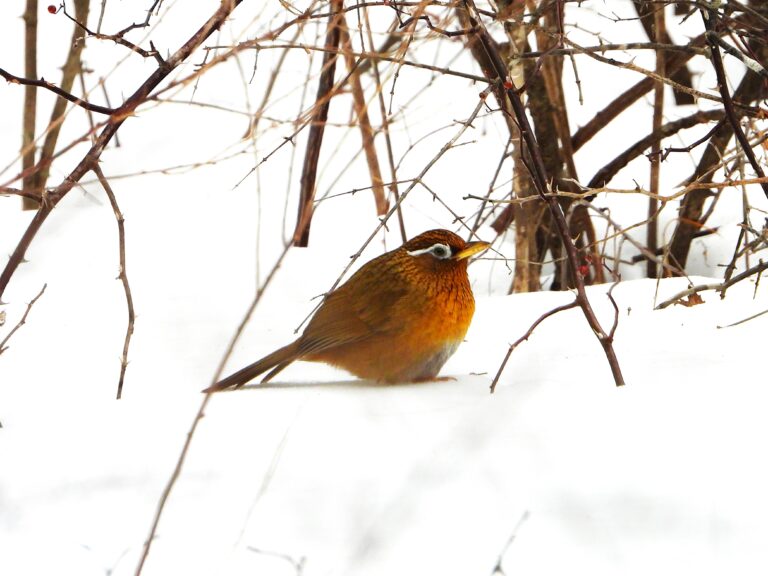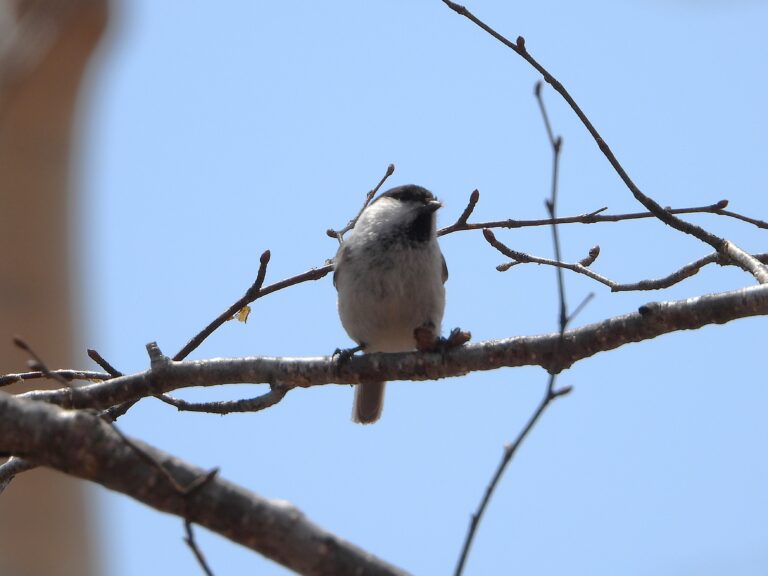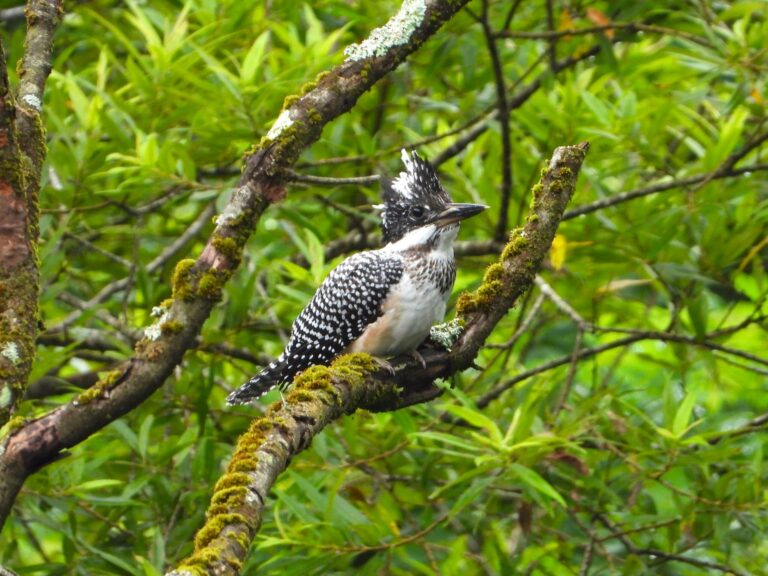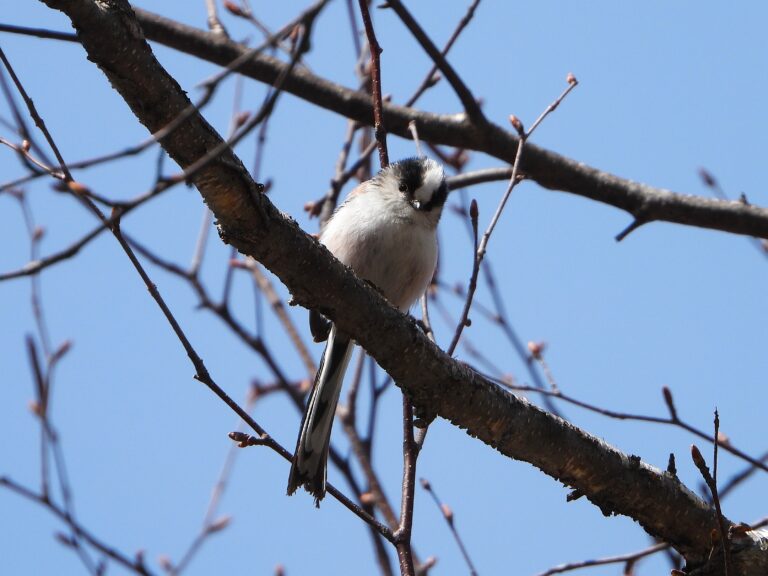Olive-backed Pipit (Anthus hodgsoni) – Wildlife of Japan
Introduction
The Olive-backed Pipit (Anthus hodgsoni) is a small songbird of the family Motacillidae.
In Japan, it is a common summer breeder in Hokkaido and northern Honshu, and a migrant or winter visitor further south to Shikoku and Kyushu.
It inhabits forested and semi-open areas and is often seen walking on the ground or perching on low branches.
The species is distinct from the Tree Pipit (A. trivialis), although the two appear similar in plumage.
Appearance
This bird measures about 14–15 cm in length.
It has olive-brown upperparts with fine streaks and whitish underparts marked with bold dark streaks on the breast and flanks.
The supercilium is pale and distinct, contrasting with a darker eyestripe.
The legs are pinkish, and the outer tail feathers are white, visible in flight.
Its plumage shows greener tones than that of the Tree Pipit, and the facial markings are more defined.
Habitat & Distribution
In Japan, the Olive-backed Pipit breeds mainly in coniferous and mixed forests at mid to high elevations.
During migration and winter, it moves to lower areas, including forest edges, wooded parks, and open fields with trees.
Its global range extends from northern Europe and Siberia eastward to Japan, and southward to Southeast Asia during winter.
Behavior
The Olive-backed Pipit walks and feeds on the ground, occasionally flicking its tail.
Its flight call is a soft “tseep.”
During the breeding season, males perform a song flight, rising with fluttering wings and descending while singing a short, melodious series of notes.
When disturbed, it often perches quietly on a branch, relying on its cryptic coloration.
Diet
The species mainly feeds on insects and other small invertebrates taken from the ground or low vegetation.
In autumn and winter, it also eats seeds and small berries.
Reproduction
The breeding season in Japan occurs from May to July.
The nest is placed on or near the ground, hidden among grass, moss, or roots.
It is made of dry grass and lined with finer materials.
The clutch usually contains 4–6 eggs.
Both parents feed the chicks, which fledge about two weeks after hatching.
Typically, one brood is raised per season.
Conservation
The Olive-backed Pipit is listed as Least Concern by the IUCN and is common throughout Japan.
No major threats are known at present, although local populations may decline if forest undergrowth is removed through logging or overbrowsing.
Maintaining natural forest structure supports stable breeding conditions.
Author’s Impression
I observed this bird in the mountains of Tochigi Prefecture. It moved quietly among the fallen leaves, occasionally giving its soft call. The olive tones of its plumage blended perfectly with the forest floor, making it hard to spot at first. Watching it walk calmly through the undergrowth left a peaceful and memorable impression—a modest yet beautiful part of Japan’s mountain forests.

